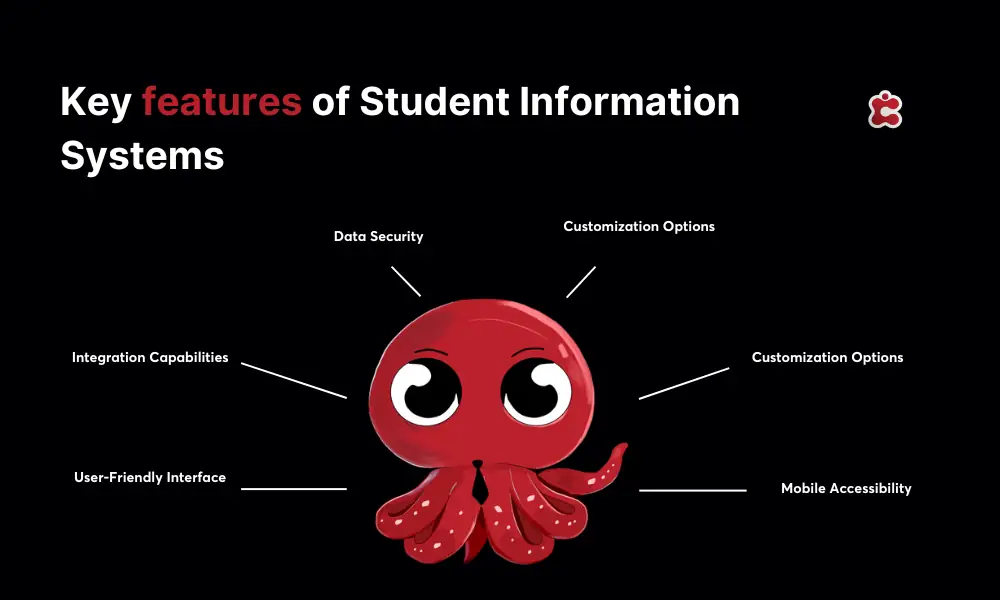Widespread teacher shortages, funding constraints, and declining test scores have all put our K12 education system under immense pressure. Schools are struggling to provide the high-quality education every student deserves, and it often feels like there aren’t enough resources to go around. But what if there was a way to make things a bit easier?
When you think of a management tool, you usually think about spreadsheets and to-do lists. But Student Information Systems (SIS) are so much more than that. Think of SIS as a supercharged tool that helps schools manage their day-to-day operations more smoothly. These systems can centralize student data, automate tasks, and offer valuable insights that help educators and administrators make smarter decisions. we’ll take a closer look at the biggest challenges schools face today and show you how SIS can tackle them head-on. From funding shortages to boosting teacher retention, we’ll explore how SIS can transform your school for the better.

1. Funding Shortages
One of the biggest challenges faced by K12 schools today is the lack of funding. It’s an issue that impacts nearly every aspect of education—from the resources available to students and staff to the quality of support services. Limited budgets can mean outdated textbooks, underpaid teachers, and fewer extracurricular activities, all of which affect the overall learning experience.
How SIS helps:
SIS platforms provide robust data analytics that can pinpoint exactly where resources are needed most. By analyzing trends and patterns, schools can make more informed decisions about how to allocate their funds effectively, ensuring that every dollar is used where it will make the biggest impact.
SIS tools offer valuable insights into the effectiveness of various programs and initiatives. This data can be instrumental in justifying funding requests and demonstrating to stakeholders and funding bodies that investments are yielding positive results. Schools can make a stronger case for continued or increased financial support by showcasing the tangible benefits of funding.
2. Teacher Shortages and Retention
Nearly 9 in 10 schools struggle to hire qualified educators. In K12 education specifically, 39% of teachers say they feel burned out “very often” or “always.” This high level of burnout and the ongoing challenge of recruiting and retaining talented teachers create significant hurdles for schools.
How SIS helps:
1. Scheduling and Administrative Support: Managing day-to-day tasks and complex schedules can be overwhelming for teachers. SIS platforms simplify these processes by automating routine administrative duties and organizing schedules.
2. Professional Development Management: Supporting teachers’ professional growth is essential for retention. SIS tools track and manage professional development opportunities, ensuring that educators have access to relevant training and career advancement.
3. Communication Tools: Clear and efficient communication between teachers and administration is vital for a supportive work environment. SIS systems offer robust communication features that facilitate collaboration, allowing teachers to easily connect with colleagues and administrators.
3. Standardized Testing and Assessment Pressure
In 2022, only 36% of fourth graders and 26 % of eighth graders were proficient in math in the USA. This statistic underscores the significant pressure standardized testing can place on students and educators. The stress and emphasis on these tests can sometimes detract from the overall quality of teaching and learning.
How SIS can help:
SIS platforms come equipped with tools to track and analyze assessment data. Here are some tools you can use:
- Performance Dashboards: Visualize and monitor student performance with interactive dashboards that aggregate data from various assessments
- Custom Reporting Tools: Generate detailed reports on student performance across different subjects, grade levels, and assessment types.
- Assessment Analytics: Analyze data from formative and summative assessments to evaluate student achievement, track progress over time, and identify patterns that may indicate areas requiring further instruction.
- Benchmarking Tools: Compare student performance against district, state, or national benchmarks to gauge how students are performing relative to broader standards.
- Data Visualization Tools: Use charts, graphs, and other visual aids to make assessment data more understandable and actionable.
4. Student Engagement and Motivation
Keeping students engaged and motivated to learn is a hurdle all in itself. Maintaining students’ interest and enthusiasm for their studies can be a significant challenge in today’s fast-paced world. When students aren’t engaged, their academic success can suffer.
How SIS can help:
SIS platforms come equipped with tools to monitor student participation and progress in real time. It tracks attendance, assignment completion, and classroom interactions. This allows teachers to quickly identify which students may be struggling or disengaged and intervene.
Having open commination channels with students is important to ensure that students are motivated. SIS systems often include regular feedback and encouragement features, such as messaging systems and notification tools.
Kids love playing games. So why not bring that into the classroom? An SIS provides tools for creating dynamic and engaging learning materials, such as multimedia presentations, interactive quizzes, and gamified lessons.

5. Parent and Community Involvement
Limited parent and community engagement in the educational process can create a gap between schools and the families they serve. When parents and community members aren’t fully involved, it can impact students’ academic success and overall school morale.
How SIS helps:
SIS platforms often include parent portals that provide real-time access to student progress, grades, and attendance. These portals allow parents to stay informed about their child’s academic performance and communicate directly with teachers. Schools can create a stronger partnership with families by keeping parents in the loop.
Features for Sharing Resources and Updates:
- Newsletters and Announcements: Easily distribute school newsletters and important announcements to parents and the community.
- Event Calendars: Share up-to-date calendars of school events, activities, and deadlines to keep everyone informed.
- Resource Libraries: Provide access to educational resources, school policies, and support materials that can help parents assist their children with their studies.
- Discussion Forums: Enable online forums or discussion boards where parents and community members can engage with school topics and each other.
Classter’s SIS: Best Choice for K12 Schools
If you want to solve K12 education problems head-on, Classter’s Student Information System is your go-to solution. Designed specifically with K12 schools in mind, Classter addresses some of the biggest challenges faced by educators, students, and administrators.
Classter’s comprehensive student profiles and personalized learning journeys ensure that every student receives the support they need. Educators can tailor their approach to meet each student’s unique needs by tracking academic progress, attendance, and personal milestones.
With tools for creating interactive and engaging learning materials, Classter supports differentiated instruction and caters to various learning styles. This flexibility helps meet the diverse needs of students and keeps them engaged and motivated.
Key Features of Classter SIS:
- Comprehensive Student Profiles
- Efficient Enrollment Process
- Integrated Academic Scheduling
- Real-Time Grade and Attendance Tracking
- Seamless Communication Channels
- Secure Data Management
- Interactive Learning Tools
- Parent and Community Portals
Contact us today to learn more and schedule a demo. Let Classter help you overcome your challenges and create a thriving educational environment for all.
FAQ’s
K12 schools face several significant challenges, including funding shortages, teacher shortages and retention, standardized testing pressures, educational inequality, and low student engagement. Addressing these issues requires innovative solutions and effective tools to support both educators and students.
A Student Information System (SIS) addresses K12 challenges by centralizing data, automating tasks, and providing insights. It helps manage funding, track student performance, streamline communication, and enhance engagement, ultimately improving educational outcomes and operational efficiency.
Classter’s SIS is designed specifically for K12 education, offering features tailored to schools’ unique needs. It provides comprehensive student profiles, interactive learning tools, efficient enrollment processes, and seamless communication channels, making it a versatile solution for K12 institutions.

